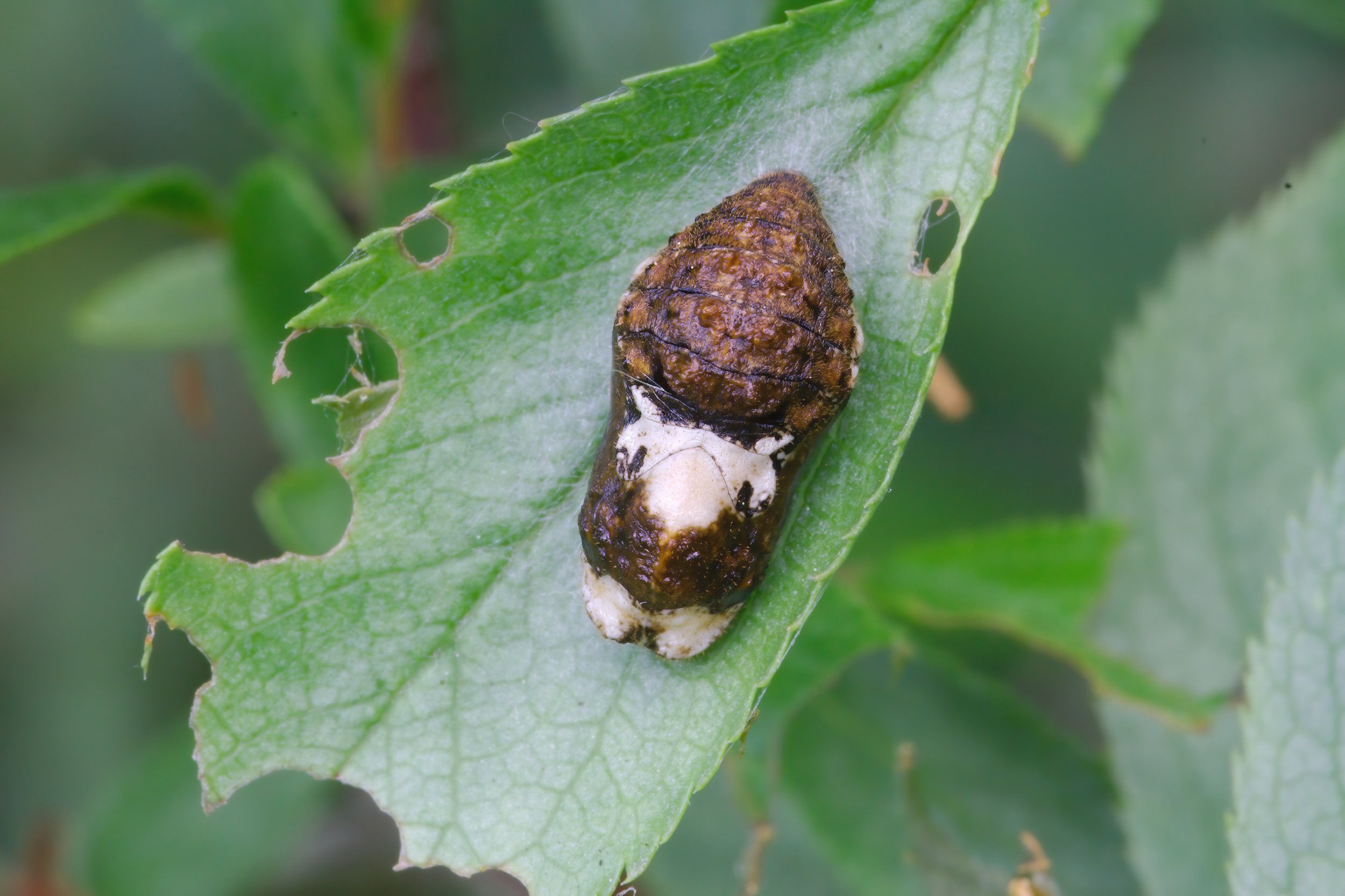Black Hairstreak
Scientific Name - Satyrium pruni
Flight Period - June to July
Overwinters as - Egg
Habitat - Woodland
Larval foodplants - Blackthorn
Conservation status - BC Priority High
Northamptonshire distribution - Very localised
Best public sites to see them - Fermyn Country Park and Woods, Fineshade Woods, Glapthorn Cow Pastures and Salcey Forest
The nationally rare Black Hairstreak is one of Northamptonshire’s truly iconic species and one which butterfly enthusiasts from all over the country regularly visit the county to see. It has a very short flight time and only flies for a few weeks from the beginning of June and into early July so visitors need to be quick off the mark if they wish to see them at their very best. The lifecycle of this secretive butterfly is rather hard to study but finding its early stages has been a passion of mine for many years. They spend most of their life in the egg form. The egg is a peppermint colour when first laid but within seconds turns pink/purple and then within a few hours turns brown camouflaging it perfectly against the bark of the Blackthorn. The eggs are mostly laid on the thin branches of young growth and are tucked into knocks, forks or the bases of thorns etc. When the larvae emerge in the spring of the following year they climb to reach a bud and burrow themselves into it to become almost impossible to find. Later instars are much more easy to find as they rely on their amazing camouflage and rest on the tops of the Blackthorn leaves. The pupae, which mimic bird droppings, are the easiest of the early stages to find. While most pupate in the undergrowth some can pupate right in plain site on the top of a leaf and can be very conspicuous. They sometimes wander quite far before pupating and they can be found on any adjacent vegetation that grows next to their food plant. When the adults have emerged the best technique is to find a suitable Blackthorn and then stand and wait, scanning to tops of the bushes for any butterflies that may take flight. When the butterfly has settled you may need binoculars to see the characteristic row of black spots running down the outer edge of the hindwing. The best site to see and photograph Black Hairstreaks is undoubtedly Glapthorn Cow Pastures, especially along the infamous “third ride”. However, they can be seen in quite a few other locations with Salcey Forest being second best to Glapthorn, especially in the area known as the “motorway meadow”. Other good locations to look for them include Fermyn Country Park and Wood and Fineshade Woods. For more information about how to identify the Hairstreaks please click here.
Black Hairstreak Distribution 2018-2022
Black Hairstreak
A Black Hairstreak feeding on Honeydew
A Black Hairstreak egg is a pink/purple colour when freshly laid
A Black Hairstreak egg that has taken on its typical brown colour during the winter
Black Hairstreak larva
Black Hairstreak larva about to pupate
Black Hairstreak pupa
Black Hairstreak pupa
Black Hairstreak pupa as seen from above











